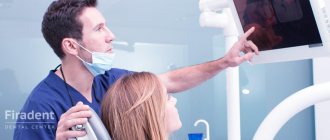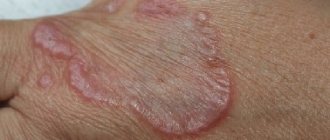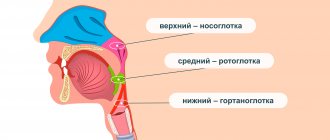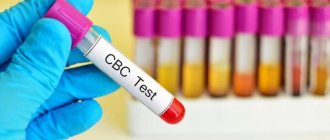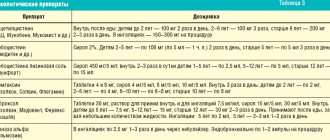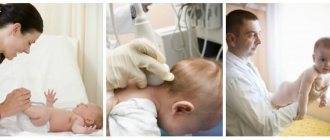Reactive arthritis is an autoimmune disease that develops after infectious diseases and manifests itself in joint damage. Rheumatologists at the Yusupov Hospital make a diagnosis using the latest equipment and laboratory diagnostic methods. Complex therapy is carried out in accordance with clinical recommendations for the treatment of reactive arthritis. Doctors at the therapy clinic individually select medications and use only pharmacological agents registered in the Russian Federation.
Severe cases of the disease are discussed at a meeting of the Expert Council. Candidates and doctors of medical sciences, doctors of the highest category take part in its work. Leading specialists in the field of rheumatology are collectively developing tactics for managing patients with reactive arthritis. The medical staff is attentive to the wishes of patients and their relatives.
The causes of reactive arthritis vary. Reactive arthritis includes all inflammation of the joints that are chronologically associated with any infection. At the same time, no microorganisms were detected in the synovial fluid of the affected joints. The connection between arthritis and a previous infection is confirmed by carefully determining the history of the disease, analyzing the clinical manifestations of arthritis, identifying the pathogen, and detecting high titers of antibodies to it in the blood.
Reactive arthritis occupies one of the leading places in terms of prevalence among rheumatic diseases. Their share is 10-15%. In the general structure of reactive arthritis, the leading position is occupied by urogenic reactive arthritis associated with infection of the genitourinary system. Enterogenous forms of the disease, in which the main focus of infection is localized in the intestine, develop less frequently.
What is reactive arthritis (ReA)
The term “reactive arthritis” was first used more than 50 years ago to name arthritis that develops after yersiniosis in the absence of infectious agents in the joints. But after a few years, this name began to be associated with certain infections of the gastrointestinal tract, genitourinary organs and nasopharynx.
Currently, reactive arthritis is considered to be non-purulent inflammation of the joints, developing no later than 6 to 8 weeks after a urogenital, intestinal or nasopharyngeal infection. ICD-10 code M02.
Young men aged 17–40 years are more likely to get sick after suffering from sexually transmitted infections (women get sick much less often). In children, adolescents, as well as people of any age and gender, reactive arthritis can develop after intestinal infections, as well as infections of the nasopharynx.
The prevalence of ReA in our country among adults is about 43 per 100,000 population, among children - 99, among adolescents - 172. The incidence is growing, which is largely due to genetic predisposition, asymptomatic infections and untimely administration of adequate treatment.
There is also Reiter's syndrome, which develops after a urogenital infection and manifests itself in the form of three main symptoms: arthritis, conjunctivitis and urethritis.
Causes of the disease
The main causes of reactive arthritis are past infection and genetic predisposition. Infections that can cause ReA include:
- urogenital form of ReA
– chlymydia, ureaplasmosis, mycoplasmosis; - intestinal form of ReA
– shigenellosis (dysentery), salmonellosis, yersiniosis, intestinal infection caused by Escherichia coli; - nasopharyngeal form
– previous nasopharyngeal infections caused by staphylococcal, streptococcal and other infections.
A previous infection is a trigger (triggering factor) that starts a chain of immuno-allergic and inflammatory reactions. This occurs predominantly in genetically predisposed individuals who have the HLA-B27 antigen in their body, which causes an imbalance in the immune system, which leads to increased formation of prostaglandins and cytokines - biologically active substances that cause inflammation.
A long-term inflammatory process is also supported by incompletely removed infectious pathogens and the appearance of antibodies to them. Reactive arthritis caused by urogenital infection (chlamydia, mycoplasma, ureaplasma), which penetrates cells and remains viable for a long time, takes a particularly long time. Failures in the immune system cause allergic and autoimmune (allergy to the body's own tissues) processes, which also support long-term inflammation.
Varieties
Today, it is customary to distinguish several types of secondary diseases. Arthropathy of the knee, hip, elbow, etc. can be:
- reactive - occurs against the background of a specific tissue reaction to the development of systemic pathologies of the body. Occurs in leukemia and endocrine system disorders;
- dystrophic - progression is due to insufficient nutrition of cartilage tissue. Occurs in people over 55 years of age when natural disorders affecting the functioning of the entire body are detected;
- pyrophosphoric (chodrocalcinosis) - has a connection with metabolic disorders, namely, the exchange of salts and calcium in the tissues of the human body. Often, the provocateurs of this type of illness are injuries to large joints;
- allergic – provoked by allergic reactions;
- psoriatic – occurs with psoriasis;
- idiopathic - defined in a situation where it is impossible to establish reliable causes for the development of a pathological condition of a secondary type;
- hereditary form - transmitted at the genetic level, established on the basis of the collected anamnesis.
Symptoms of reactive arthritis
Regardless of the cause of the disease, reactive arthritis develops in the same way. By the time the first symptoms of reactive arthritis appear, all manifestations of the trigger infection end or go unnoticed.
Pain, swelling and redness over the affected joint are some of the first symptoms of reactive arthritis.
The first signs of ReA
The disease begins 3 to 30 days (sometimes more) after the infection, acutely with an increase in body temperature, headache, malaise, and the appearance of an inflammatory process in the joints. More often one or more asymmetrically located joints of the lower extremities are affected. Most often these are the knee, ankle and toe joints.
The skin and subcutaneous tissue over the affected joint are red, swollen, and painful. Sometimes pain immediately appears in the lower back - a sign of damage to the sacroiliac joints and joints of the spine. When the first signs of joint inflammation appear, you should consult a doctor. The Paramita clinic will definitely help you.
Obvious symptoms
Reactive arthritis can occur in the form of:
- acute inflammatory process
– up to 3 months; - subacute
– for 3 – 6 months; - protracted
– 6 – 12 months; - chronic
– more than 12 months; - recurrent
– with relapses and remissions.
In addition to the symptoms of reactive arthritis with pain and dysfunction of the affected joints, damage to periarticular tissues - ligaments, tendons, periarticular capsules (enthesitis) is also characteristic. Particularly characteristic is damage to the heel (subcalcaneal bursitis), accompanied by severe pain and inflammation of the periarticular tissues, as well as the 1st toe with redness and swelling of the tissues - “sausage toe”. Such symptoms can completely disrupt the function of the lower extremities - it becomes impossible to move due to pain.
ReA of urogenital origin is often combined with long-term urethritis in men or cervicitis in women, as well as eye damage (Reiter's syndrome). Eye damage can occur in the form of mild conjunctivitis, but in some cases the deeper membranes of the eye are also affected.
Sometimes with reactive arthritis, psoriasis-like rashes appear on the skin, palms and soles, as well as psoriatic-like lesions on the nails. Painless erosions appear on the oral mucosa. There may also be enlargement of the lymph nodes in the groin area.
Dangerous symptoms
The most dangerous is reactive arthritis associated with urogenital infection. This form of the disease is prone to a long-term relapsing course followed by the formation of a rheumatoid-like course. Therefore, it is very important to promptly and adequately treat arthritis.
What are the prognosis and can it be prevented?
If arthropathy is left untreated, the pathology progresses over time. The joint may become infected, and mobility will become increasingly limited, leading to immobility and disability. All this can be avoided if you strictly follow the doctor’s recommendations and do not experiment with self-medication.
Since arthropathy is secondary, in order to prevent it, it is necessary to take preventive measures to prevent the development of other diseases. And if they already exist, then treat them in a timely manner. It never hurts to maintain an adequate level of physical activity, eat right, monitor your body weight and give up bad habits.
To minimize the risks of any joint diseases, be it arthropathy, coxarthrosis or salt deposition due to gout, it is necessary to undergo regular preventive examinations, and not to ignore alarming symptoms. Your health is in your hands!
How dangerous is the disease?
The danger of reactive arthritis is that it can develop into a long-term chronic recurrent disease that is difficult to treat.
Stages of ReA
Any form of arthritis has serious complications, so you should not delay treatment.
See how easily the disease can be cured in 10-12 sessions.
The inflammatory process in the joints occurs in several stages:
- initial
- with an acute onset, general symptoms appear: fever, headache, malaise, as well as inflammation, swelling and tenderness of the joints; At first, the ankle joints and joints of the 1st toe are most often affected; - expanded
- asymmetrical damage to the joints of the legs (from bottom to top), starting from the ankle joints to the knees; pain appears in the lower back associated with damage to the joints of the spine, skin rashes, erosions on the mucous membranes, enlarged lymph nodes; with Reiter's syndrome - conjunctivitis and urethritis; - final
- with intestinal and nasopharyngeal forms of reactive arthritis, the inflammatory process ends after 3 months with recovery; in a subacute course, the process can last up to 6 months and also end in recovery; The urogenital form of ReA often occurs chronically.
Possible complications
Chronic reactive arthritis can cause lameness
Reactive arthritis should be treated as early as possible.
Prolonged inflammation can lead to chronic pain, especially in the heel, foot and toes, leading to lameness.
With a long chronic course of Reiter's syndrome, damage to the optic nerve and blindness is possible, as well as damage to the reproductive system and infertility.
What to do during an exacerbation
If the inflammatory process has taken a chronic, relapsing course, then it is necessary to carry out long-term treatment under the supervision of a physician. When the first signs of relapse of reactive arthritis appear, you should:
- limit physical activity;
- take a medicine from the group of NSAIDs (non-steroidal anti-inflammatory drugs) - Diclofenac, Ibuprofen, Meloxicam; a tablet of any product can be taken orally, and a cream, gel or ointment with the same composition can be applied externally to the area of the affected joint;
- Urgently contact your doctor to prescribe adequate treatment.
How is arthropathy treated?
By analogy with the treatment of osteoarthritis, the therapy of arthropathy is complex. It combines physiotherapeutic and medicinal methods, and physical therapy is included at the rehabilitation stage. It is important for the patient to follow simple rules:
- to refuse from bad habits;
- balance your diet;
- monitor body weight;
- take prescribed medications.
For arthropathy, radon baths, electric shock and climatotherapy are most often prescribed. Among the pharmaceutical drugs that are relevant are antibiotics that eliminate the provoking agent, non-steroidal anti-inflammatory drugs that fight visual manifestations and chondroprotectors. The latter promote tissue regeneration, as they enrich the joint with building material.
In advanced cases, surgery may be necessary
Possible localization of inflammation
In intestinal and urogenital forms of reactive arthritis, the joints of the lower extremities are most often affected. In the nasopharyngeal form - the joints of the upper extremities and the temporomandibular joint.
Arthritis of the lower extremities
Affection of the lower extremities predominantly begins with the big toes and moves upward (staircase sign), affecting the overlying joints asymmetrically. In reactive arthritis, one to five joints become inflamed:
- interphalangeal toes; Most often the first toe is affected, it swells and turns red - the “sausage toe” symptom;
- ankles with damage to surrounding tissues; Particularly characteristic is damage to the tendons and ligaments in the heel area with the formation of loose heel spurs, which causes constant pain that intensifies when walking and stepping on the heel;
- knee – this location is characterized by the formation of a large amount of exudate (inflammatory fluid in the joint), which leads to the formation of popliteal cysts; rupture of cysts leads to the development of thrombophlebitis and impaired venous circulation;
- hip – rarely affected, occurs in the form of moderate joint pain.
Chondroprotectors: what are they, how to choose, how effective are they?
Joint pain at rest
Arthritis of the upper extremities
Localization of reactive arthritis in the joints of the upper extremities is much less common. This mainly occurs in diseases of the nasopharynx and dental infectious and inflammatory processes.
The most common joints affected by ReA are:
- elbow - the elbow swells, turns red, becomes painful, the arm has difficulty bending and unbending;
- wrist with damage to the ligaments and tendons of the hand - pain in the joint is transmitted to the hand; severe pain does not allow you to squeeze and unclench your hand or hold objects in it;
- shoulder – rarely affected, characterized by swelling and pain.
Temporomandibular arthritis
Reactive arthritis affects the joints of the lower and upper extremities, temporomandibular joints
Triggers include infections of the nasopharynx, ear and mouth. Characterized by slight swelling, redness and swelling in the area of development of reactive arthritis. When opening the mouth, there is a slight asymmetry; the chewing process may be disrupted and become painful. The disease occurs acutely or subacutely, is well treated, and the prognosis is favorable.
General information
Arthropathy is a secondary lesion that occurs against the background of concomitant non-rheumatic diseases. Activation of pathological processes can occur in diseases of various etiologies.
The key manifestation of arthropathy is painful conditions without affecting the shape and functionality of the joint. In some cases, reactive arthritis occurs.
Localization is in the joints mainly of the lower extremities, therefore in medical practice arthropathy of the knee joint is most often diagnosed. The manifestation is inflammation, swelling, as well as rapid fatigue and difficulty in making movements.
It is important to note that the key difference between the condition under consideration is the dependence of the existing syndrome on the course of the “main” pathological process.
Severe pathologies develop extremely rarely. With a competent approach to eliminating the underlying disease, arthropathic symptoms are significantly reduced or completely disappear.
Diagnostics
Diagnosis of reactive arthritis includes identifying characteristic manifestations of the disease and confirming the diagnosis with the following studies:
- Laboratory diagnostics:
- general clinical blood and urine tests - these studies reveal the presence of an inflammatory process, anemia;
- biochemical blood tests - total protein and protein fractions, the presence of C-reactive protein (a sign of an inflammatory reaction);
- immunological studies - rheumatoid factor, antibodies to cyclic citrullinated peptides to exclude rheumatoid arthritis; markers of systemic lupus erythematosus;
- detection of the HLA-B27 antigen by testing blood using the PCR (polymerase chain reaction) method, which allows identifying the smallest DNA particles of this protein;
- identification of urogenital, intestinal infections and foci of nasopharyngeal infections using microscopic, microbiological (culture on nutrient media), immunological studies;
- To exclude purulent arthritis, synovial fluid is sometimes examined.
- X-ray of the joints, during which the degree of their damage is revealed.
- Ultrasound - allows you to identify changes in the periarticular tissues.
- Arthroscopy is the examination of the inner articular surface using optical equipment. Rarely used in ReA.
When is it time to seek medical help?
Despite the extensive symptomatic picture and seemingly obvious signs of a secondary disease, identifying it in the initial stages is not an easy task.
Only over time does a feeling of a sharp deterioration in health begin, which makes it possible to track vivid symptoms.
You should visit a traumatologist or orthopedist in a situation where:
- swelling of the periarticular tissues is observed;
- body temperature rises “unreasonably”;
- there is a feeling of extreme fatigue, weakness is present;
- lymph nodes increase in size;
- movements are severely limited or completely impossible.
Self-medication in such a situation is not the best solution. Wasting time reduces your chances of recovery.
Treatment of reactive arthritis
Only a doctor can cure reactive arthritis after an examination and taking into account its results. Basic principles of treatment of reactive arthritis:
- elimination of inflammation and joint pain;
- suppression of infectious-allergic and autoimmune processes;
- eliminating the trigger infection.
The following types of treatment for reactive arthritis are carried out:
- medicinal;
- non-medicinal;
- using folk remedies.
Drug therapy
Crunching in joints - when to worry
Intra-articular injections of hyaluronic acid
Treatment for reactive arthritis begins with eliminating inflammation, swelling and pain. For this purpose, patients are prescribed NSAID drugs. The most effective medications include Diclofenac, Aceclofenac, Ibuprofen and others in the form of injections, tablets or externally (gels, ointments).
In case of severe swelling and inflammation that cannot be eliminated by NSAIDs, glucocorticoid hormones are prescribed. They are prescribed in courses in the form of tablets orally (Prednisolone), in the form of pulse therapy - short intensive courses intravenously (Methylprednisolone), and also by injection into the joint or periarticular tissue (Hydrocortisone, Diprospan).
If there is a risk of transition to a chronic course, basic therapy is prescribed - drugs that suppress immune reactions: Sulfasalazine, Methotrexate, Azathioprine, etc. Biological agents are also prescribed - biologically active substances (antibodies, cytokines, etc.) that take part in immune reactions ( Mabthera).
For trigger urogenital infections, a long course of antibacterial therapy must be prescribed: antibiotics from the group of macrolides (Clarithromycin), tetracyclines (Doxycycline) or fluoroquinolones (Ciprofloxacin) for a month or more.
For intestinal infections, antibacterial therapy is considered inappropriate. For nasopharyngeal and dental infections, the decision to prescribe antibiotics is made by the doctor individually.
Medicines for the treatment of reactive arthritis
Non-drug treatment
Non-drug treatments include:
- Diet. There is no special diet, but given the allergic component of the disease, foods that cause allergies (eggs, nuts, citrus fruits, red and orange vegetables and fruits, etc.), spicy seasonings, fried, canned, smoked foods, sweets and baked goods are excluded from the diet.
- Physiotherapeutic procedures. In the acute period, to eliminate swelling and pain, electrophoresis with Hydrocortisone is prescribed, and then laser and magnetic therapy. At the recovery stage, sanatorium-resort treatment with balneo and mud therapy is recommended.
- Reflexology courses.
- PRP therapy is the stimulation of the body’s regenerative abilities by introducing the patient’s own plasma enriched with platelets.
- Therapeutic exercises and massage are carried out after eliminating the acute inflammatory process.
Folk remedies
Treatment of reactive arthritis with folk remedies is often included in complex treatment to enhance the effectiveness of drugs and reduce the drug load on the patient’s body. Folk remedies are selected for each patient individually, depending on the nature of the disease.
Self-treatment of reactive arthritis with folk remedies is ineffective.
Approach to treating the disease in our clinic
When a patient is admitted to the clinic with symptoms of reactive arthritis, a mandatory comprehensive examination is carried out before prescribing complex treatment. At the same time, the patient undergoes emergency procedures to eliminate inflammation and pain. This includes drug treatment, acupuncture, physiotherapy, etc. After the examination, a comprehensive treatment is prescribed, which includes:
- modern Western methods of treatment using the latest drugs, treatment regimens and non-drug methods aimed at eliminating the symptoms of reactive arthritis;
- traditional oriental treatment methods aimed at restoring the health of the entire body, including joint function.
This approach allows you to quickly and effectively completely cure reactive arthritis.
General clinical recommendations
In the acute and subacute course of ReA, after a course of treatment, the patient should be under the supervision of a rheumatologist for six months with clinical and laboratory monitoring every 3 months.
In the chronic course of the disease, dispensary observation is longer with the prescription of courses of anti-relapse therapy until a state of stable remission appears.
After an illness, it is recommended to avoid heavy physical activity and strength sports. Swimming is a good way to restore joint function.
Persons with a genetic predisposition (presence of the HLA-B27 antigen) to reactive arthritis are recommended to have one proven sexual partner.
We combine proven techniques of the East and innovative methods of Western medicine.
Read more about our unique method of treating arthritis
FAQ
Is reactive arthritis contagious?
No. But the urogenital infection that caused it can persist for a long time and be contagious.
Are there any peculiarities of the course, diagnosis, treatment in children?
In children, ReA is more acute and rarely becomes chronic.
What prognosis do doctors usually give?
The prognosis for reactive arthritis is favorable; in most cases, complete recovery occurs. But if left untreated, it becomes chronic with a long course and constant pain in the joints.
Reactive arthritis is a complex, incompletely studied infectious-allergic disease that mainly affects genetically predisposed people and requires timely and adequate treatment. It's not worth running.
But if you were unable to seek medical help in time, do not despair, modern technologies make it possible to provide assistance and relieve pain at any stage of the disease. The Paramita clinic (Moscow) will always help you.
Literature:
- Agababova ER, Bunchuk NV, Shubin SV, etc. Criteria for the diagnosis of reactive arthritis (draft). Scientific and Practical Rheumatology 2003;(3):82–3.
- Kovalev YN, Ilyin NI. Reiter's disease. Chelyabinsk: Option-book; 1993. 240 p.
- Zeidler H, Hudson AP. New insights into Chlamydia and arthritis. Promise of a cure? Ann Rheum Dis. 2014;73:637–44. doi:1136/annrheumdis-2013-204110.
- Ford D.K. Natural history of arthritis following venereal urethritis. Ann Rheum Dis. 1953;12(3):177–97. doi: 10.1136/ard.12.3.177.
Themes
Arthritis, Joints, Pain, Treatment without surgery Date of publication: 10/13/2020 Date of update: 12/14/2020
Reader rating
Rating: 5 / 5 (2)

